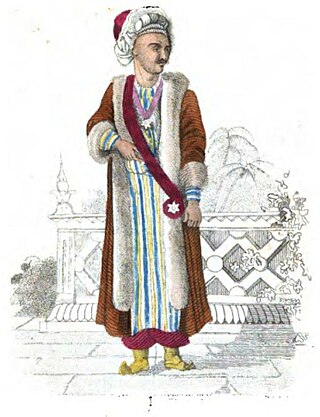
An ambassador is an official envoy, especially a high-ranking diplomat who represents a state and is usually accredited to another sovereign state or to an international organization as the resident representative of their own government or sovereign or appointed for a special and often temporary diplomatic assignment. The word is also used informally for people who are known, without national appointment, to represent certain professions, activities, and fields of endeavor, such as sales.
Ping-pong diplomacy refers to the exchange of table tennis (ping-pong) players between the United States and the People's Republic of China in the early 1970s. Considered a turning point in relations between the United States and the People's Republic of China, it began during the 1971 World Table Tennis Championships in Nagoya, Japan, as a result of an encounter between players Glenn Cowan and Zhuang Zedong. The exchange and its promotion helped people in each country to recognize the humanity in the people of the other country, and it paved the way for President Richard Nixon's visit to Beijing in 1972.
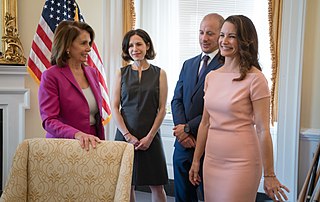
Goodwill ambassador is a post-nominal honorific title, a professional occupation and/or authoritative designation that is assigned to a person who advocates for a specific cause or global issue on the basis of their notability such as a public figure, advocate or an authoritative expert. Sometimes the role of a goodwill ambassador is presented as "Ambassador" or "Goodwill Ambassador" preceding the first and last name, the titled name of the individual is always presented with an organizational, regional or national affiliation. Goodwill ambassadors generally deliver goodwill by promoting ideals or positions from one entity to another, or to a population to establish a benevolent relationship. A goodwill ambassador may be an individual from one country who resides in or travels to another country on a diplomatic mission at a peer to peer level. This can be country to country, state to state, city to city, or as an intermediate emissary representative of the people of a specific organization or cultural group, such as an indigenous tribe, marginalized people or enclave population.

The National Cherry Blossom Festival is a spring celebration in Washington, D.C., commemorating the March 27, 1912, gift of Japanese cherry trees from Mayor Yukio Ozaki of Tokyo City to the city of Washington, D.C. Ozaki gave the trees to enhance the growing friendship between the United States and Japan and also celebrate the continued close relationship between the two nations. Large and colorful helium balloons, floats, marching bands from across the country, music and showmanship are parts of the Festival's parade and other events.
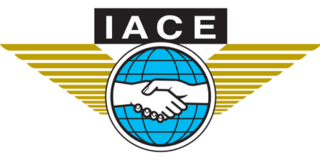
The International Air Cadet Exchange is an annual student exchange program designed to promote character, good-will, and cooperation among the world's civilian auxiliary aviation programs.

The Japan National Tourism Organization, JNTO, provides information about Japan to promote travel to and in the country. It was established in 1964 and its headquarters are in Yotsuya, Shinjuku-ku, Tokyo. The JNTO operates Tourist Information Centers (TICs) as well as a website. It disseminates information about transportation, lodging, food and beverage, and sight-seeing as well as published tourism statistics and market reports. It also provides support for international conventions and incentive events.

Prince Tokugawa Iesato was the first head of the Tokugawa clan after the overthrow of the Tokugawa shogunate, and a significant figure in Japanese politics and diplomacy during the Meiji, Taishō and early Shōwa period Japan. When Prince Tokugawa travelled to other nations representing Japan during his diplomatic journeys, he usually presented his name as Prince Iyesato Tokugawa. Prince Tokugawa held the influential position of president of Japan's upper house of congress the Diet for 30 years. Tokugawa promoted democratic principles and international goodwill. It was only after his death in 1940 that Japanese militants were able to push Japan into joining the Axis Powers in WWII.

The Apollo 11 goodwill messages are statements from leaders of 73 countries around the world on a disc about the size of a 50-cent piece made of silicon that was left on the Moon in 1969 by the Apollo 11 astronauts.
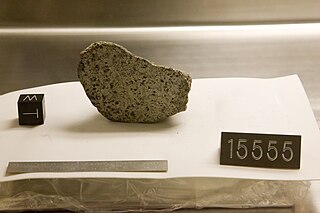
Of the 270 Apollo 11 Moon rocks and the Apollo 17 Goodwill Moon Rocks that were given to the nations of the world by the Nixon Administration, approximately 180 are unaccounted for. Many of these rocks that are accounted for have been locked away in storage for decades. The location of the rocks has been tracked by researchers and hobbyists because of their rarity and the difficulty of obtaining more. Moon rocks have been subjects of theft and forgery as well.

The California lunar displays are two commemorative plaques consisting of small fragments of Moon specimen brought back with the Apollo 11 and Apollo 17 lunar missions and given in the 1970s to the people of the state of California by United States President Richard Nixon as goodwill gifts.

The Apollo 11 lunar sample display is a commemorative podium style plaque display consisting of four dust particle specimens, the recipient's flag and two small metal plates attached with descriptive messages. The Apollo 11 plaques were given as gifts in 1970 by President Richard Nixon to 135 countries, the 50 states of the United States and its territories, and the United Nations.

The Apollo 17 lunar sample display consists of a Moon rock fragment from a lava Moon stone identified as lunar basalt 70017, the recipient's flag and two small metal plates attached with descriptive messages. A goodwill gift from the Apollo 17 mission was then given by President Richard Nixon in the form of a wooden commemorative plaque display to all fifty U.S. states and U.S. territories, and 135 nations worldwide.
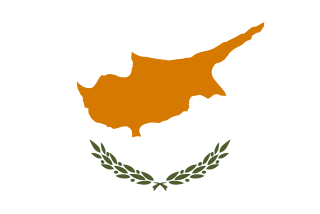
The Cyprus lunar sample displays are part of two commemorative plaques consisting of tiny fragments of Moon specimens brought back with the Apollo 11 and Apollo 17 lunar missions. These plaques were given to the people of the Republic of Cyprus by United States President Richard Nixon as goodwill gifts.

The Honduras lunar sample displays are two commemorative plaques consisting of small fragments of Moon specimen brought back with the Apollo 11 and Apollo 17 lunar missions and given in the 1970s to the people of Honduras by United States President Richard Nixon as goodwill gifts.

The Romania lunar sample displays are two commemorative plaques consisting of small fragments of Moon specimen brought back with the Apollo 11 and Apollo 17 lunar missions and given in the 1970s to the people of Romania by United States President Richard Nixon as goodwill gifts.

The Illinois lunar sample displays are two commemorative plaques consisting of small fragments of Moon specimen brought back with the Apollo 11 and Apollo 17 lunar missions and given in the 1970s to the people of Illinois by United States President Richard Nixon as goodwill gifts.

The New Mexico lunar sample displays are two commemorative plaques consisting of small fragments of Moon specimen brought back with the Apollo 11 and Apollo 17 lunar missions and given in the 1970s to the people of the state of New Mexico by United States President Richard Nixon as goodwill gifts.
The Oregon lunar sample displays are two commemorative plaques consisting of small fragments of Moon specimen brought back with the Apollo 11 and Apollo 17 lunar missions and given in the 1970s to the people of Oregon by United States President Richard Nixon as goodwill gifts.

The West Virginia lunar sample displays are two commemorative plaques consisting of small fragments of Moon specimen brought back with the Apollo 11 and Apollo 17 lunar missions and given in the 1970s to the people of the state of West Virginia by United States President Richard Nixon as goodwill gifts.

The Lunar sample displays are two commemorative plaques consisting of small fragments of Moon specimen brought back by the astronauts of the Apollo 11 and Apollo 17 lunar missions. The plaques and Moon rocks were given as goodwill gifts in 1970 and 1973 to the people of 135 countries, the 50 states of the United States, and to U.S. overseas territories by United States President Richard Nixon.

















